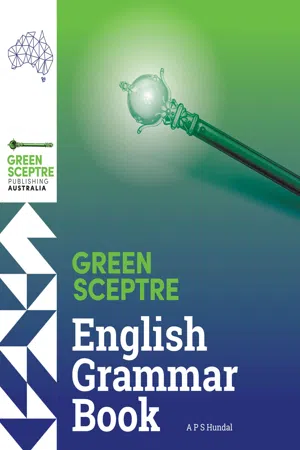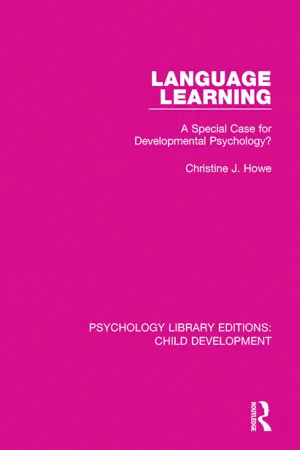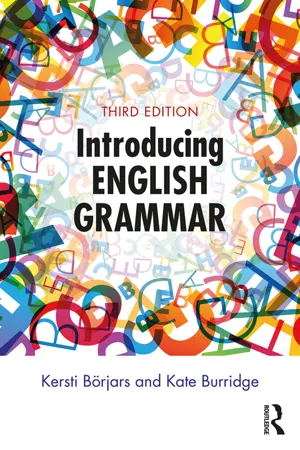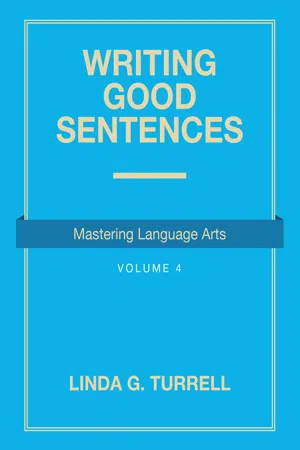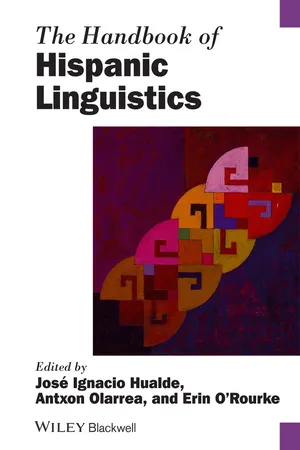Languages & Linguistics
Declarative
Declarative refers to a type of sentence that makes a statement or declaration. In linguistics, it is used to describe a sentence that conveys information without posing a question or giving a command. Declarative sentences typically end with a period and are the most common type of sentence in everyday communication.
Written by Perlego with AI-assistance
Related key terms
5 Key excerpts on "Declarative"
- eBook - ePub
- APS Hundal(Author)
- 2022(Publication Date)
- Green Sceptre Publishing Australia(Publisher)
Sentences Sentences are set of words expressing a complete idea. It has a subject and predicate. It is the largest independent unit that starts with capital letter and finishes with punctuation mark. Sentences are of four kinds:1. Declarative Sentences2. Imperative sentences3. Exclamatory sentences4. Interrogative sentencesDeclarative SentencesA sentence that makes a statement or declares something is called Declarative sentence. It can be either simple or compound. A simple Declarative sentence has a subject and predicate. The compound Declarative sentence joins two phrases together with conjunction or comma.For exampleImperative sentences These sentences express order, command, request, or suggestion. Mostly they start with a verb and the subject is missing. In fact, the subject can be taken as a person listening the sentence. They end up with a period or an exclamation point. However, with question mark some instances.Javan loves swimming (Simple Declarative)Ajay loves farming, but his wife hates weeding. (Compound Declarative).Bring me a watch from Australia.Please pass the salad.Please, call a doctor!Park the car in my house, will you?Imperative sentences are binary means either positive or negative; when these sentences are positive the verb of a sentence is affirmative (affirmative encourages action or directs some happening). Negative indicates something should not occur or be desired.Some sentences can be used both imperative and exclamatory but very rare. For example:Enjoy some fresh fruits. (Positive)Don’t eat my fresh fruits. (Negative)Give me liberty or give me death!The above-written sentence is full of emotions; on the other side, it is also expressing his wish. Exclamatory sentences It is a forceful Declarative sentence expressing strong emotions. It ends with an exclamation. In formal English exclamatory sentences mostly start with “What” or “How”. But in Informal English, these sentences begin with any word. - eBook - ePub
Language Learning
A Special Case for Developmental Psychology?
- Christine J. Howe(Author)
- 2017(Publication Date)
- Routledge(Publisher)
Despite the interest in meaning, we cannot discuss Declaratives without first defining them, and this requires a brief sortie into the domain of grammar. Accepting this we find that, like the other modalities, Declaratives can take a number of forms. They can be simple or complex, verbal or adjectival, and positive or negative. Moreover, like interrogatives, though not imperatives, Declaratives are obliged by their linguistic definition to have a subject noun phrase before their first verb. Also like interrogatives the first verbs to appear in Declaratives can be embellished by a range of auxiliaries, both modal and, in the case of main verb Declaratives, non-modal. The chief difference between interrogatives and Declaratives lies in the fact that, with the latter, auxiliaries are optional, and when they occur they must follow the subject noun phrase. This suggests that to exemplify well-formed Declaratives, we could list “The people agree”, “A ball is round”, “Some lions are chasing the zebra”, “Their house has not been painted”, and “I may have seen a fat tabby cat in the henhouse”. Indeed, these are all examples of simple Declaratives. If we move on to complex sentences, we could also mention “I’ve fed the cat who is sitting over there”, “The fact of the matter is that our neighbour has contacted her solicitor”, and “It’s too high to reach”.From the examples it should be clear that on literal usage the general function of many Declaratives is to provide information. Moreover, it should also be clear that this is just as true of speech to children as it is of speech to adults. Nevertheless, while accepting this it is likely that Declarative sentences to children are restricted in the way they provide information. Reading the literature on adult speech to children, I have the impression that not only is the subject noun phrase almost invariably reserved for the topic. The topic when the information is behavioural is almost invariably the performer. With English speakers, this is, as Bates and MacWhinney (1979, 1982) point out, a strong tendency in adult speech to adults but, as Slobin and Bever (1982) have also noted, it seems virtually exceptionless in adult speech to children. Whether it aids comprehension is hard to establish, but comprehension can certainly be assumed. After all, when we observe children responding to Declaratives in the fashion of (2.11) it seems clear, given that the previous section established the responses as feedback giving, that both the topic and something of the information must have been grasped. - eBook - ePub
- Kersti Börjars, Kate Burridge(Authors)
- 2019(Publication Date)
- Routledge(Publisher)
Declaratives are usually used to make a statement, interrogatives normally pose questions, imperatives issue directives and exclamatives make exclamations. However, this is just the typical correspondence between form and function; in fact, interrogatives can be used for purposes other than posing a question and questions can be asked without using an interrogative structure. Why don’t you mind your own business! looks like a question, for instance, in that it starts with why, but the intonation indicated by the exclamation mark here means that it was most likely intended as a directive to stay out of the speaker’s hair. It’s for this reason we need to distinguish form and function. In the following sections we will discuss the typical use of that structure, but also provide examples of atypical uses. 5.2 Declaratives In a Declarative sentence the subject NP precedes the predicate VP: Declarative: Subject Predicate The Declarative structure is probably what you would think of as the most normal way of arranging a sentence. Two examples are: I have the circadian rhythms of a vampire. (AUS#563:13) Bob Dylan has at various times revolutionised folk, rock, country and gospel music. (N#801:12) The normal interpretation of these sentences would be that the speaker is making a statement. However, as we shall see in later sections, there are other ways of making statements. It is also possible to pose a yes–no question using a Declarative sentence but with a rising intonation (indicated in writing by a question mark) - eBook - ePub
Writing Good Sentences
Mastering Language Arts
- Linda G. Turrell(Author)
- 2022(Publication Date)
- Page Publishing, Inc.(Publisher)
Chapter 4 Sentences—Declarative, Interrogative, Imperative, and ExclamatoryThere are many types of sentences. They are interrogative, exclamatory, Declarative, and the imperative. Each type of sentence works in a different way.The interrogative sentence asks a question. For example: How are you? The exclamatory sentence makes a statement with feeling. For example: That was hot! The Declarative sentence makes a statement. For example: It is raining today. The imperative sentence makes a command. For example: Stop that talking! Did you notice that each sentence has different punctuation? The Declarative sentence uses the period. The exclamatory sentence uses the exclamation point. The imperative sentence uses the point also. The interrogative uses the question mark. It is a good idea to know the different types of sentences, because it will lend style to your writing. Chapter 4—Sentences—Declarative, Interrogative, Imperative, and Exclamatory Change the sentences according to directions.- The book was very long. Interrogative
- Is that story too long? Declarative
- The flower is purple. Exclamatory
- The water is cool. Interrogative
- Please write clearly!
- Put your papers away!
- The roses were planted in the garden.
- Stop!
- Can you give me directions?
- Is the trip planned for Saturday?
- Be there!
- Can you be there on time?
- They helped the students.
- We will talk about it.
- eBook - ePub
- José Ignacio Hualde, Antxon Olarrea, Erin O'Rourke(Authors)
- 2012(Publication Date)
- Wiley-Blackwell(Publisher)
“sentential force.” The relation between “sentential type” and “sentential force” is shown in (3), adapted from Portner (2009: 263). Portner only includes the first three types. Following the NGDLE, I have added exclamatives and desideratives. Notice that dubitative (2g) and probability sentences (2h) have been left out of our classification, as they also have been in the NGDLE. I return to these constructions in Section 4.(3)However, it is clear that we need yet another level to capture the complete meaning of a sentence. Consider (4):Sentential type Sentential force Declarative Asserting Interrogative Asking Imperative Requiring Exclamative Exclamation Desiderative Wishingn (4) a. ¿Puedes decirme la hora? You-can tell-me the hour ‘Can you tell me the time?’ b. ¡Dime la hora, por favor! Tell-me the hour, please ‘Tell me the time, please!’Syntactically speaking, (4a) is an interrogative, and, as such, it has the sentential force of asking. In fact, someone could (jokingly) assume that this is a real question, answer “yes” and stop there, without telling us the time! However, we generally do not mean (4a) as a question, but as a request for someone to tell us the time, similar to (4b). This suggests that there is yet another level of meaning beyond that of sentential force. Semanticists and pragmaticists refer to this level as “illocutionary force” (Sp. fuerza ilocutiva/elocutiva ); that is, “the communicative action which the speaker intends to perform by getting the hearer to understand that this is the speaker’s intention” (Portner 2005:192). Following Portner (2009: 263), I will assume that “sentential force must be analyzed at the interfaces among syntax, semantics, and pragmatics, while illocutionary force is a pragmatic phenomenon having to do with the speaker’s communicative intentions, analyzed in terms of speech act theory (e.g., Austin 1962; Searle 1969).”3 Basic sentential types
According to Portner (2005: 194), “the three sentential types of Declarative, interrogative, and imperative seem to be universal. There are other ‘minor’ clausal types, like exclamatives and optatives, in some languages. But even all of these do not match the diversity of illocutionary acts, which include promising, threatening, hinting, proposing, denying …” In what follows, we will concentrate on the different constructions in which these basic sentential types are realized in Spanish. Where appropriate, we will briefly discuss some of the unexpected illocutionary forces that these constructions may have.
Index pages curate the most relevant extracts from our library of academic textbooks. They’ve been created using an in-house natural language model (NLM), each adding context and meaning to key research topics.
